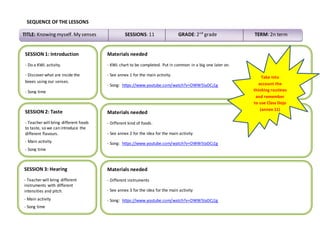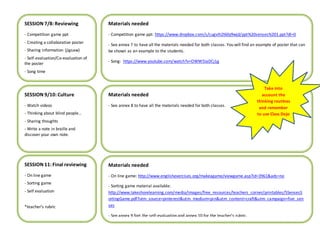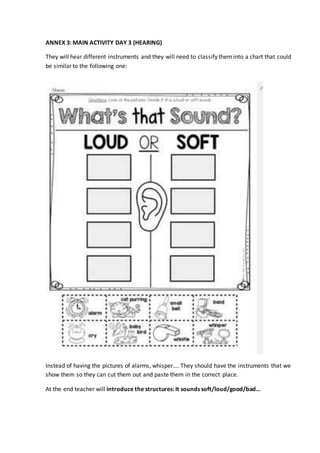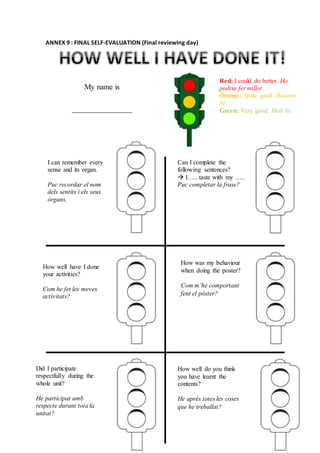This document outlines an 11-session lesson plan on the five senses for second grade students. Session topics include an introduction to the senses, taste, hearing, touch, smell, and sight. Later sessions review and reinforce the content through games and a cultural awareness activity on blindness. Materials such as food samples, musical instruments, and online games support hands-on exploration of each sense.




























